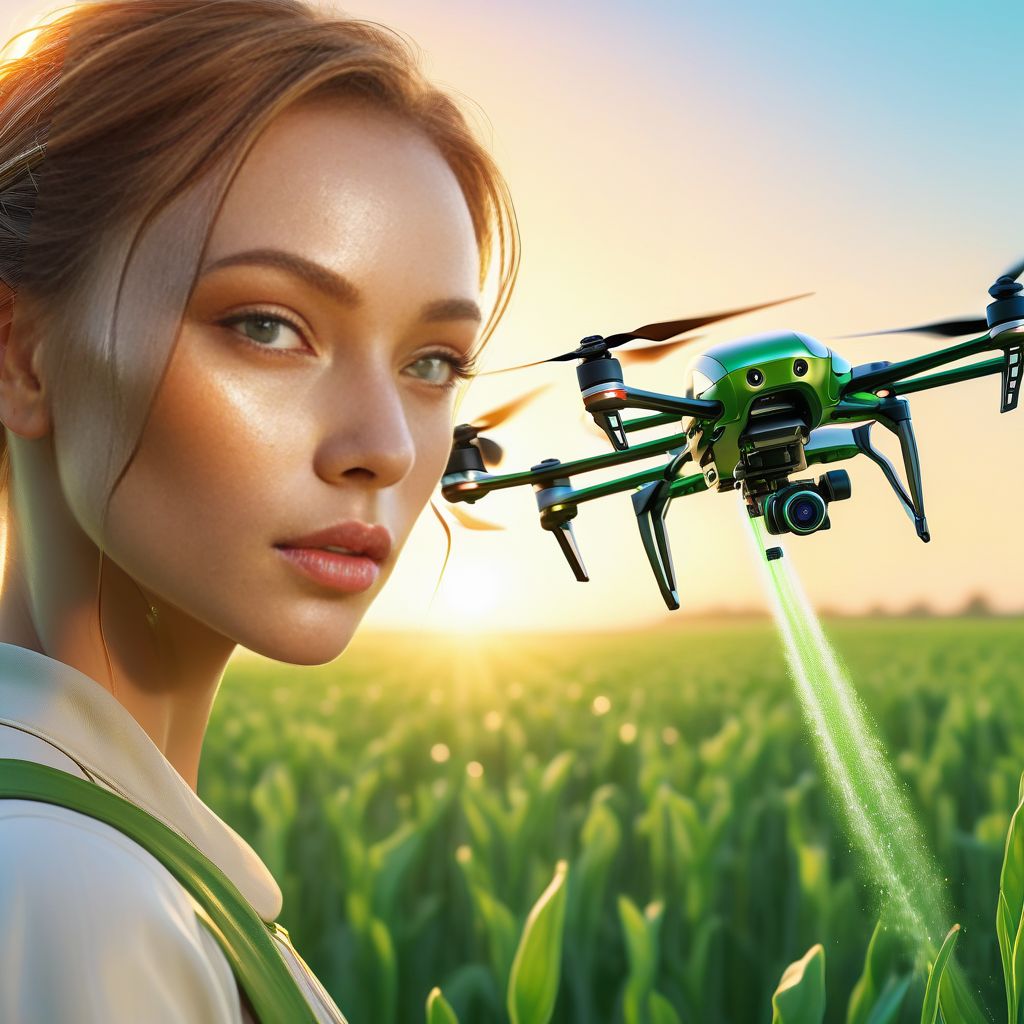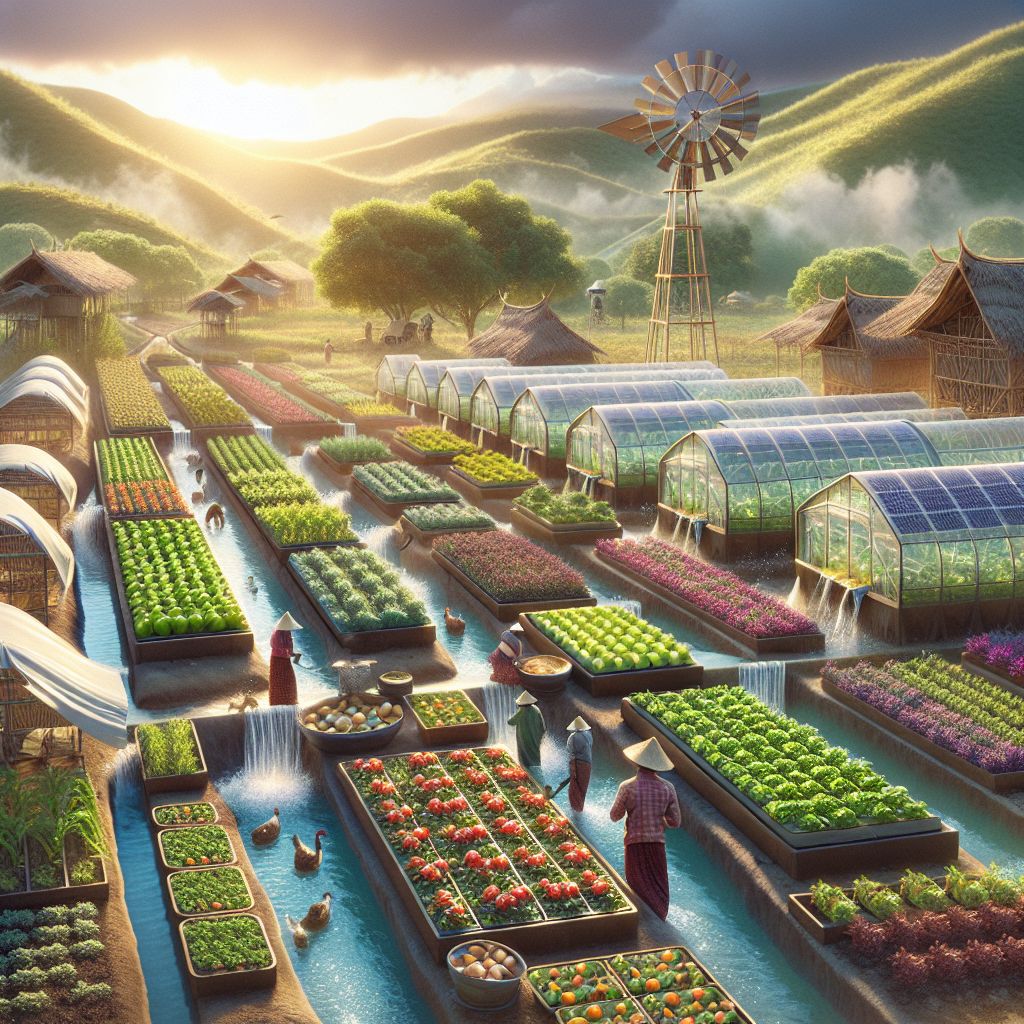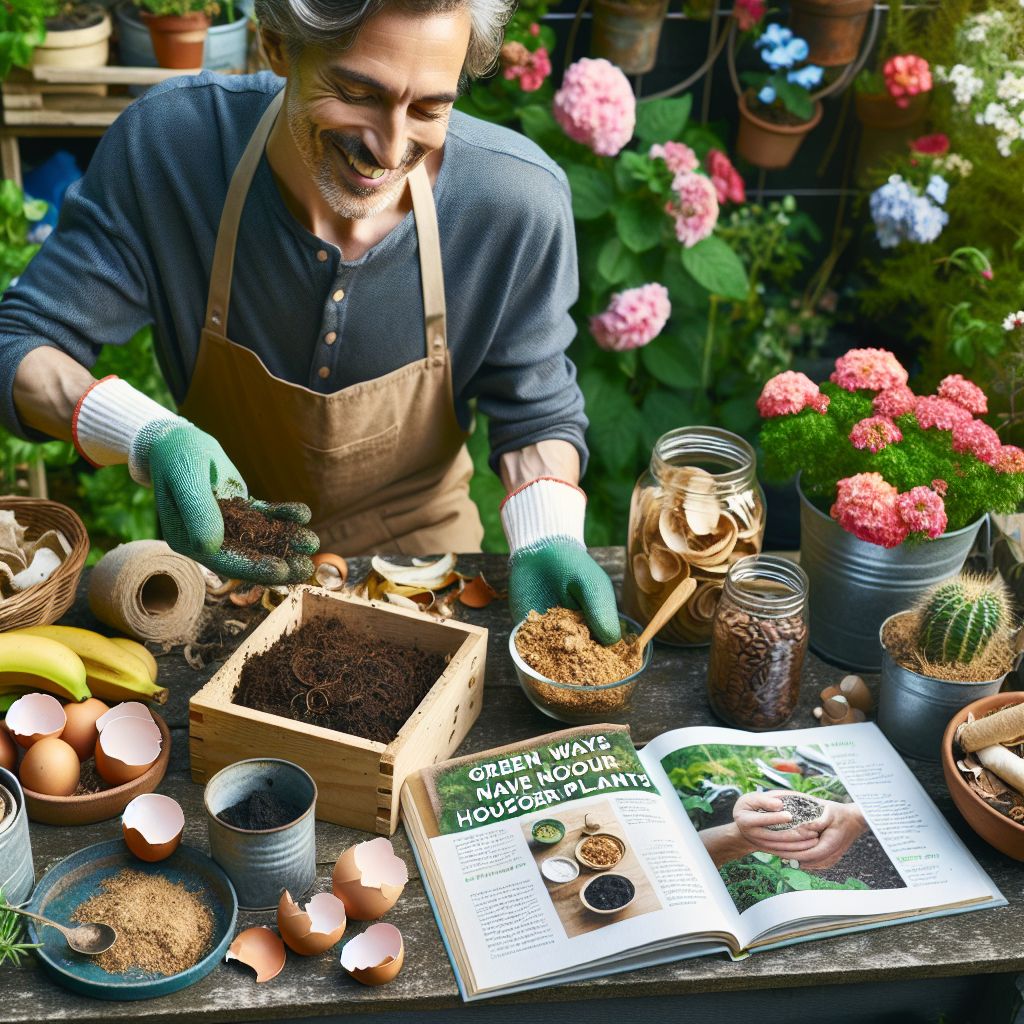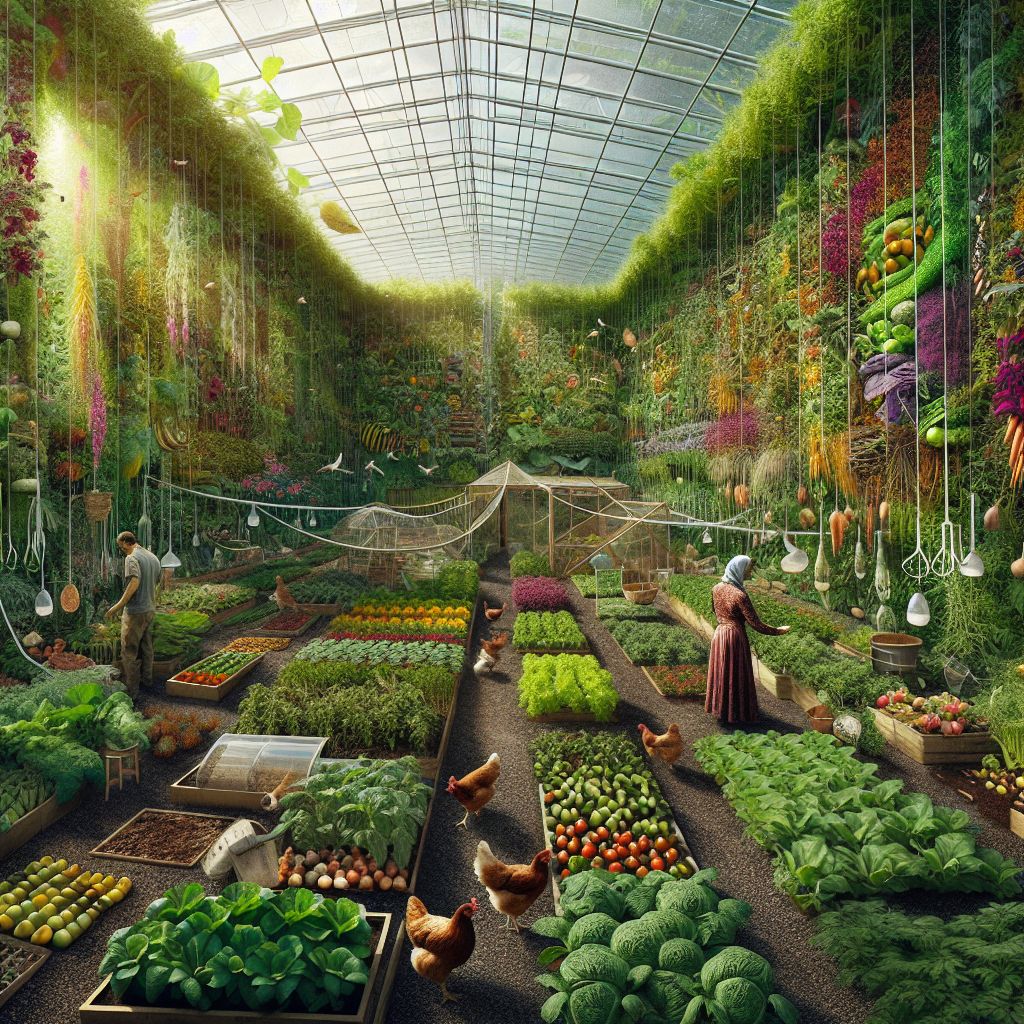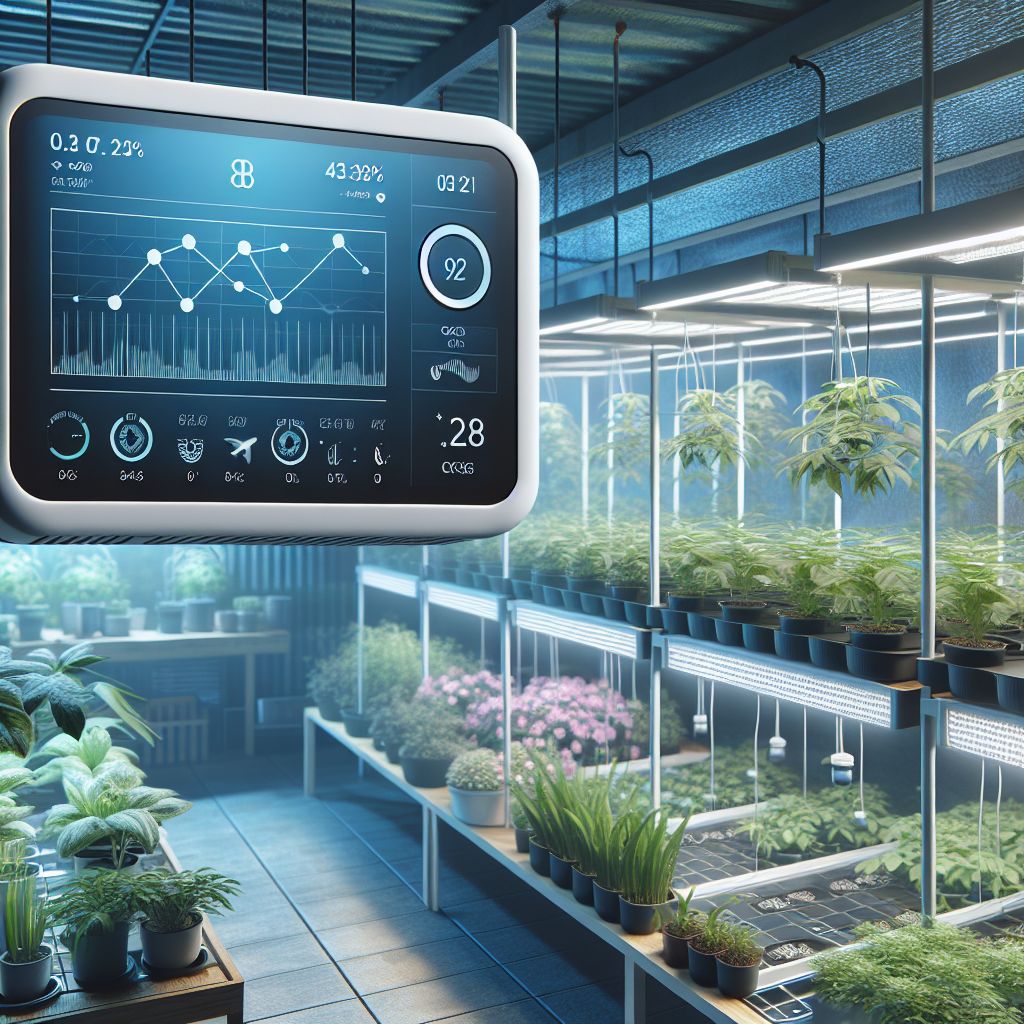Key Takeaways
- IoT devices can help monitor crop needs in real-time, leading to better decision-making.
- AI can optimize pest control and reduce chemical use, making farming more sustainable.
- Drones are revolutionizing soil health mapping and targeted crop treatment.
- Robotic innovations are increasing labor efficiency and precision in tasks like harvesting.
- Data analytics turn complex information into actionable insights for yield improvement.
The Future of Smart AgriTech
Imagine a world where farms operate like well-oiled machines, with every plant receiving exactly what it needs to thrive. That’s the promise of smart agriculture technologies. These tools are not just futuristic fantasies, they’re here now, reshaping the way we grow food. Most importantly, they’re accessible, offering farmers of all sizes the chance to revolutionize their practices.
Upcoming Smart Agriculture Innovations to Watch
Let’s dive into the innovations that are setting the stage for the next agricultural revolution:
- IoT Sensors: Tiny devices that provide big data on soil moisture, crop health, and more.
- AI and Machine Learning: Algorithms that learn from data to predict crop yields and identify diseases.
- Drones: Flying robots that map fields and apply treatments with pinpoint accuracy.
- Robotics: Autonomous machines that handle tasks like weeding and harvesting.
- Big Data Analytics: Systems that analyze vast amounts of data for informed decision-making.
- Connectivity Solutions: Technologies ensuring that even the most remote farms stay connected.
Because these technologies are rapidly evolving, staying informed is crucial for farmers who want to remain competitive.
How Farmers Can Prepare for Tech-Driven Agriculture
To stay ahead of the curve in tech-driven agriculture, farmers should familiarize themselves with the latest trends and technologies. By understanding and implementing smart greenhouse technologies, they can significantly improve crop yields and operational efficiency.
Preparation is key to embracing these changes. Farmers should start by:
- Assessing their current technology usage and identifying gaps.
- Keeping an eye on industry trends and breakthroughs.
- Building a network with tech providers and other farmers who have adopted these innovations.
- Considering small-scale trials to test the waters before fully committing.
- Exploring funding opportunities, as some governments and organizations offer grants for tech adoption.

“Modern Technology in Agriculture Sector …” from www.aeologic.com
Seeds of Change: Harnessing Smart Agriculture Tech
Adopting smart agriculture tech is not about replacing the farmer’s intuition, it’s about augmenting it with powerful tools. It’s time to plant the seeds of change and watch them grow into healthier crops and higher yields.
Why Smart Tech is a Game-Changer for Farms
Smart tech transforms farming from a guessing game into a science. With real-time data, farmers can make precise decisions that lead to increased productivity and sustainability. This is critical in an era where food demand is growing, and resources are dwindling.
Quick Tips to Integrate Smart Technologies
Here’s how you can start integrating smart technologies into your farm:
- Begin with a clear goal. What do you want to achieve with smart tech?
- Start small. Choose one aspect of your operation that could benefit the most from technology.
- Seek expert advice. Talk to agronomists or tech consultants to find the best solutions for your needs.
- Train your team. Ensure that everyone who will use the technology knows how it works and why it’s important.
- Measure your results. Keep track of changes in yield, resource usage, and overall efficiency.
Remember, the key to successful integration is to approach it as a journey, not a race.
Revolutionizing Farming with IoT
The advent of the Internet of Things (IoT) is transforming the agricultural industry by enabling farmers and agribusinesses to improve productivity and efficiency. Advancements in IoT for smart farming are particularly promising, offering solutions for monitoring crop health, automating irrigation systems, and optimizing resource use.
The Internet of Things (IoT) is at the forefront of agricultural innovation. By connecting everyday farming equipment to the internet, IoT devices provide a level of insight that was once unimaginable.
Remote Sensing for Real-Time Crop Monitoring
Imagine being able to check the health of your crops just by looking at your smartphone. Remote sensing technologies make this possible. They give you the power to spot issues early and take action to prevent losses.
For example, sensors placed throughout a field can track soil moisture levels. If an area becomes too dry, you’ll know it’s time to water before the plants start to suffer.
Irrigation Management with IoT Devices
Managing water use is crucial for sustainable farming. IoT devices can automate irrigation systems, turning them on and off based on real-time data. This means less waste and more savings, both for your wallet and the planet.

These are just the seeds of what’s possible with smart agriculture communication technologies. As we continue to explore these trends and innovations, remember that each step forward is a step towards a more efficient, sustainable, and productive future for farming.
With the rise of smart agriculture, farmers are now able to monitor crop growth and health more effectively than ever before. These advancements in agricultural technology are not only improving crop yields but also allowing for more sustainable farming practices. By integrating IoT devices and advanced analytics, farmers can gain real-time insights into their operations, optimize resource usage, and ultimately boost their productivity.
AI: The Brain Behind Smarter Farming Decisions
Artificial intelligence (AI) is not just for tech giants and gaming—it’s a cornerstone of modern agriculture. With AI, farmers can analyze data in ways that were once the domain of science fiction. It’s a game-changer, helping to predict the future of crops and enabling farmers to make smarter, more informed decisions.
Machine Learning for Predictive Agriculture
Machine learning, a subset of AI, takes historical data—like weather patterns, crop yields, and pest outbreaks—and uses it to predict future agricultural trends. This means farmers can plan better, reduce risk, and increase yields. For instance, machine learning models can forecast the optimal time to plant and harvest, ensuring crops are sown and reaped at their peak.
But it doesn’t stop there. Machine learning can also predict pest invasions, giving farmers a head start on protection measures. By analyzing patterns and environmental conditions, these AI systems can alert farmers to potential threats before they become a problem.
And when it comes to soil health, machine learning algorithms can sift through data to recommend the best fertilization strategies for different parts of a field. This not only boosts plant health but also conserves resources by avoiding over-fertilization.
Example: A vineyard owner uses machine learning to analyze satellite images and soil sensors, discovering micro-zones in the vineyard. With this insight, they tailor their watering and fertilization, leading to a 20% increase in the quality of their grapes.
AI-Driven Pest Control Strategies
AI isn’t just about crunching numbers, it’s also about taking action. AI-driven pest control strategies can identify pests from images captured by cameras in the field. Once a threat is detected, the system can recommend the most effective treatment while minimizing the use of chemicals.
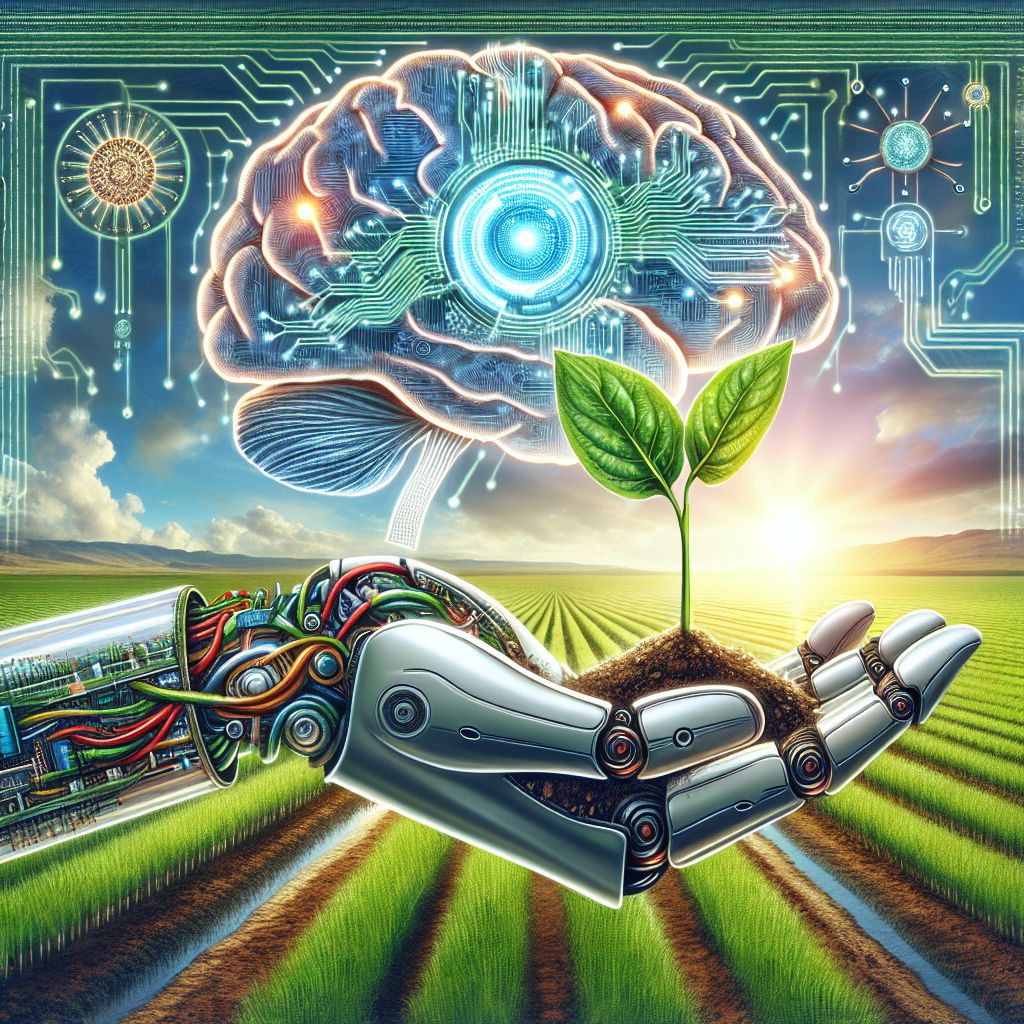
Drones: The Eyes in the Sky
Drones are soaring across agricultural landscapes, providing a bird’s-eye view that’s invaluable for managing farmland. With high-resolution cameras and other sensors, drones can map out a farm in incredible detail, revealing insights that are invisible from the ground.
Drone-Assisted Mapping for Soil Health
By taking to the skies, drones can analyze soil health across vast areas, identifying variations in texture, moisture, and nutrients. This helps farmers understand where to focus their efforts, leading to better soil management and crop performance.
Precision Sowing and Spraying with Drones
But drones do more than just observe, they also act. Precision sowing drones can plant seeds at the exact depth and spacing needed for optimal growth. Similarly, spraying drones can apply fertilizers and pesticides in precise doses, reducing waste and environmental impact.
- Drones can map out fields in minutes, not hours or days.
- Precision sowing ensures every seed has the best chance to thrive.
- Targeted spraying reduces the overall use of chemicals.
Robotic Innovation for Labor Efficiency
Robots are stepping into roles that are hard to fill with human labor, doing everything from picking fruits to pulling weeds. This not only saves time but also reduces the strain on farmers, especially during peak seasons.
Automated Harvesters: The Fruit-Picking Revolution
Automated harvesters are being designed to gently and efficiently pick fruits, identifying ripe produce with cameras and sensors. This technology ensures that fruits are harvested at the perfect moment for the best taste and shelf life. Discover more about smart greenhouse trends and how they’re revolutionizing agriculture.

“Automated Harvest is Coming …” from civileats.com
Next-Gen Weeding: Robots Replacing Herbicides
Robots equipped with cameras and AI can distinguish between crops and weeds, precisely removing the unwanted plants without harming the crops. This reduces the need for herbicides, leading to a cleaner, greener farm.
And it’s not just about what robots can do today, it’s about their potential. As technology advances, robots will take on more complex tasks, further revolutionizing agriculture.
Data Analytics: Turning Numbers into Yields
Data analytics is the unsung hero of smart agriculture. By turning numbers into actionable insights, farmers can optimize every aspect of their operation, from irrigation to pest control.
Weather Forecasting for Agricultural Planning
With advanced data analytics, weather forecasting becomes a strategic tool. Farmers can plan their activities around the weather, protecting crops from extreme conditions and making the most of favorable ones.
Yield Predictions Analyzing Big Data
By analyzing data from a variety of sources, including satellite images, sensor data, and historical yields, farmers can predict future crop performance. This helps in planning for the market, storage, and even crop rotation strategies.
These technologies are more than just gadgets, they’re essential tools in the modern farmer’s toolbox. By embracing smart agriculture communication technologies, farmers can stay ahead of the curve and ensure that their farms thrive for generations to come.
Connectivity Solutions for Rural Agriculture
Connectivity is the backbone of smart agriculture. Without it, the most advanced technologies are like cars without fuel. But in rural areas, where many farms are located, getting a reliable internet connection can be a challenge. This is where innovative connectivity solutions come in.
Satellite vs. Cellular: Choosing the Right Network
For farmers, the choice between satellite and cellular networks is crucial. Satellite internet can reach remote areas but often comes with higher latency and lower data caps. Cellular networks, on the other hand, offer faster speeds and more data, but coverage can be spotty. Farmers must weigh their options based on availability, budget, and the specific needs of their smart agriculture technologies.
Bridging the Digital Divide in Farming Communities
Bridging the digital divide is essential for ensuring that all farmers can benefit from smart agriculture. This can involve:
- Advocating for better rural internet infrastructure.
- Exploring alternative connectivity options like mesh networks or Wi-Fi balloons.
- Partnering with tech companies to pilot new connectivity solutions in rural areas.
By taking these steps, we can ensure that every farmer has access to the tools they need to succeed in the digital age.
Frequently Asked Questions
What is Smart Agriculture?
Smart agriculture is the integration of advanced technologies into farming practices to increase efficiency, productivity, and sustainability. It involves using devices like sensors, drones, and AI to collect and analyze data, which helps farmers make informed decisions.
How do IoT Devices Improve Farming?
IoT devices improve farming by providing real-time data on various aspects of agriculture, such as soil conditions, crop health, and weather. This data helps farmers optimize irrigation, fertilization, and pest control, leading to better crop yields and reduced waste.
Can AI Reduce the Use of Pesticides?
Yes, AI can significantly reduce the use of pesticides. By accurately identifying pest-infested areas and the type of pest, AI enables targeted treatment, minimizing the amount of chemicals used. This not only saves costs but also protects the environment.
What Are the Cost Implications of Smart Farming Tech?
While initial investments in smart farming tech can be significant, the long-term savings and increased yields often justify the cost. Moreover, there are scalable solutions suitable for various budgets, and some regions offer grants or subsidies to support tech adoption.
How Do Drones Contribute to Crop Management?
Drones contribute to crop management by providing detailed aerial images that help farmers monitor plant health, track growth, and detect issues like nutrient deficiencies or water stress. They can also be used for precise application of inputs, like seeds, water, and nutrients, directly where they’re needed.
As we’ve explored, smart agriculture communication technologies are transforming the agricultural landscape. From the power of IoT devices to the precision of drones, these innovations offer a new era of farming that’s more efficient, sustainable, and productive. By embracing these top trends and innovations, farmers are not just growing crops, they’re growing the future of agriculture.
As the agricultural sector continues to evolve, smart agriculture technologies are becoming increasingly important. These innovative solutions are designed to increase efficiency, productivity, and sustainability in farming practices. By leveraging IoT devices, AI, and big data analytics, farmers can monitor crop health in real time, optimize water usage, and get predictive insights about weather patterns, pests, and diseases. This not only helps in reducing the environmental impact of farming but also ensures higher yields and better quality produce.

